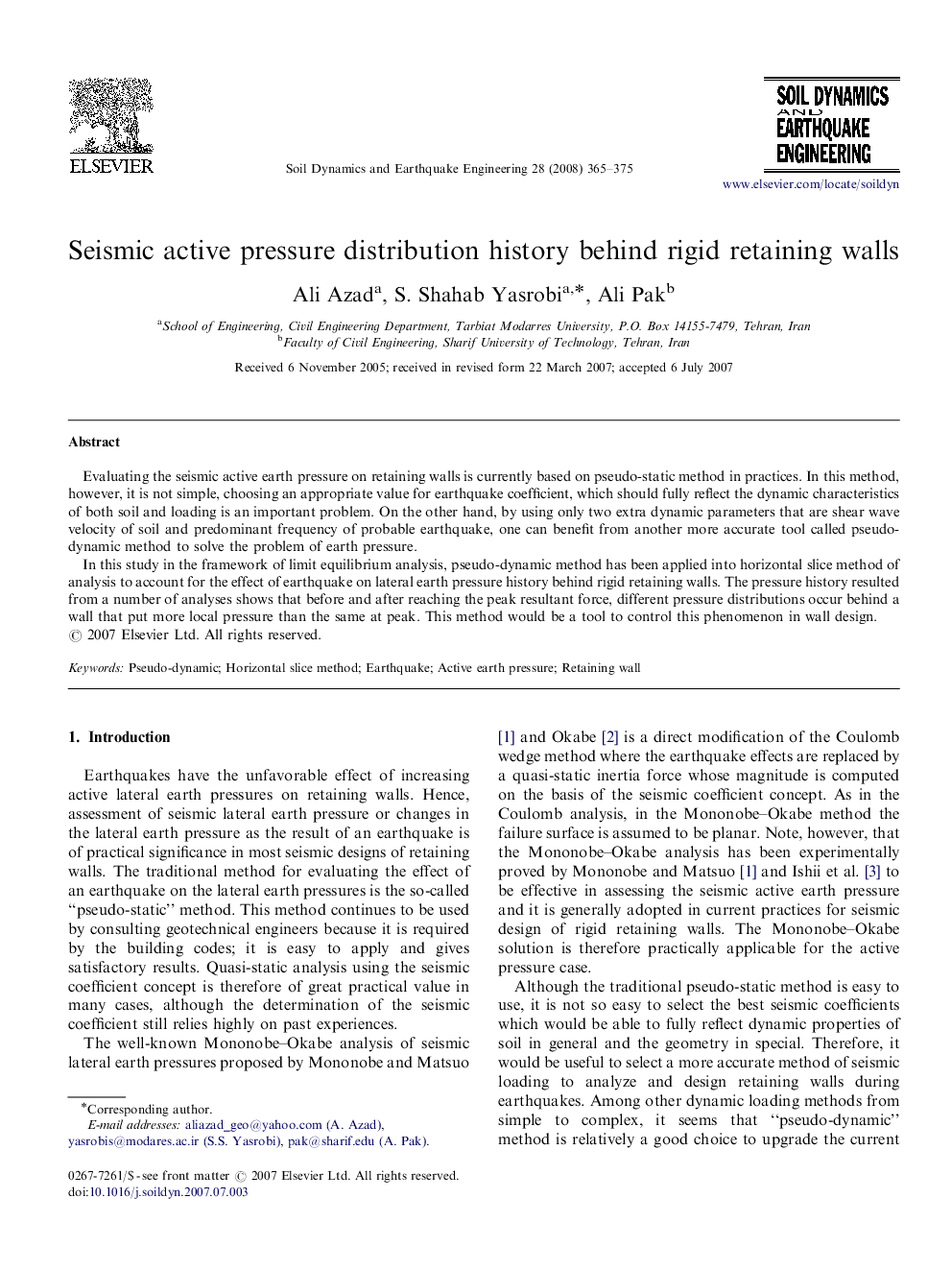| Article ID | Journal | Published Year | Pages | File Type |
|---|---|---|---|---|
| 305132 | Soil Dynamics and Earthquake Engineering | 2008 | 11 Pages |
Evaluating the seismic active earth pressure on retaining walls is currently based on pseudo-static method in practices. In this method, however, it is not simple, choosing an appropriate value for earthquake coefficient, which should fully reflect the dynamic characteristics of both soil and loading is an important problem. On the other hand, by using only two extra dynamic parameters that are shear wave velocity of soil and predominant frequency of probable earthquake, one can benefit from another more accurate tool called pseudo-dynamic method to solve the problem of earth pressure.In this study in the framework of limit equilibrium analysis, pseudo-dynamic method has been applied into horizontal slice method of analysis to account for the effect of earthquake on lateral earth pressure history behind rigid retaining walls. The pressure history resulted from a number of analyses shows that before and after reaching the peak resultant force, different pressure distributions occur behind a wall that put more local pressure than the same at peak. This method would be a tool to control this phenomenon in wall design.
